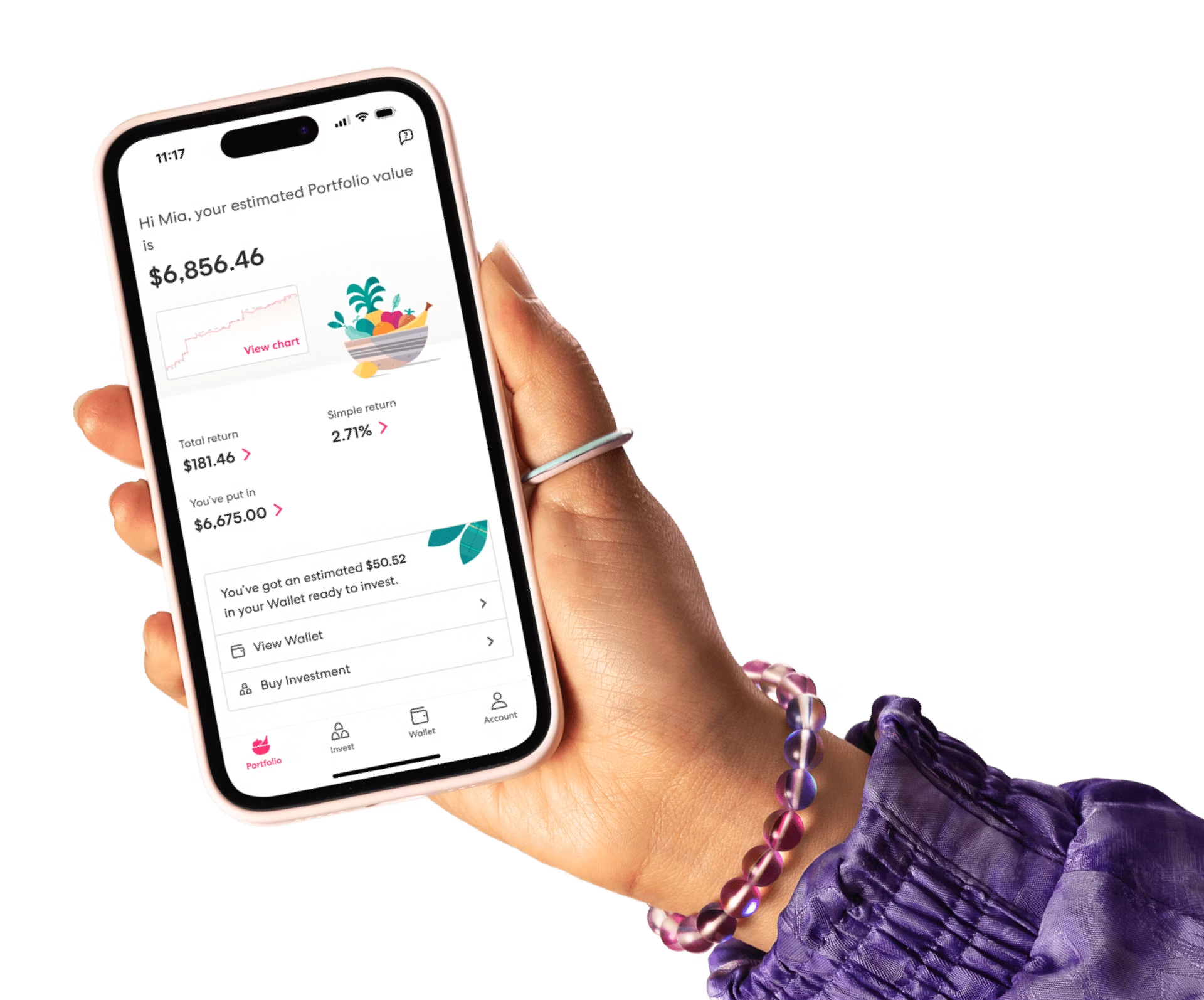Invest, save, or spend?
Every decision you make with your money falls into one of three categories: investing, saving, and spending. But which one is which? When you put money in a bank account, are you saving, or investing? When you buy shares, are you investing, or spending?

It gets pretty tricky pretty quickly, so we thought we’d show you how we like to think about it.
Keeping it simple to start
Here are the simple definitions:
Spending: money you spend now to get something now
Saving: money you put aside to spend later
Investing: money you spend in order to get more money later
Easy, right? But if you dig into these, you’ll see that there’s a lot of overlap.
Spending and investing are more similar than you think
When you invest in something like shares, you do so in the hopes of getting a return, in the form of more money further down the track.
But the exact same thing is true when you spend money on anything else—it’s just that your return isn’t in cash, and it’s usually a lot faster. When you buy a coffee, your “return” is the enjoyment you get from the tasty drink and the caffeine hit. When you pay rent, your return is a place to live. When you buy plane tickets, your return is the benefit of getting to where you want to be, quickly. All these things are benefits, they’re just not cash benefits.
Saving and investing are also more similar than different
When you put money in a savings account, you’re both saving it and investing it. On one hand, you’re putting money aside to spend later on—maybe it’s an emergency fund, or maybe you’re saving up for a holiday.
But on top of that, the bank will pay you interest. So you’re not only choosing not to spend your money, you’re also getting a small return in exchange for doing so.
The big difference: time is money
So if spending is investing (sort of), and saving is investing (again, sort of), then what’s the difference?
One of the main differences is time. Let’s go back to that coffee. When you buy a takeaway coffee, you expect to get your return pretty much immediately. In fact, you have to. If you wait more than a few minutes to drink it, it goes cold. If you waited a few weeks, it would go bad (gross).
On the other hand, think of investing in shares. As we’ve said before, investing in shares is a long-term thing. When you invest in shares today, you should expect to get your return (in this case, more money), much further down the track—maybe even several years.
Savings sits in the middle of spending and investing. You don’t get your return immediately, but your return is also generally smaller than it would be with an investment like buying shares.
The risk factor
The other difference is the risk you’re taking. When you invest in shares, you don’t know how much of a return you’re going to get. It might be 3%, 4%, 5% or more—or you might even go backwards for awhile.
When you save money, there’s a lot less risk. If you put it in the bank, you can be pretty sure (although not certain) that your savings aren’t going to lose value—but you’re also not going to gain that much value. The risk is lower than with shares, but so are your returns.
Finally, spending your money is the lowest risk of all. When you buy a coffee, you know exactly what you’re getting. You part with $4 or so, and you get $4 worth of coffee. Spending is about getting exactly what you’ve asked for, in the time frame that works for you.
But in exchange for this, you sacrifice financial returns. If you saved $4 in a low-interest savings account for a year, you’d get at least a few cents in interest—and still have your $4. When you spend $4 on a coffee, you “lose” the entire $4, and get a coffee instead. So the risks are the lowest with spending, but the financial returns are also the lowest.
What does it all mean?
When you bring this all together, you can see how your spending falls into each of the three categories: spending for today, saving for a bit in the future, and investing for the distant future.
Ideally, people should have their money distributed between all three of these things. Spending is how you get through the day, because groceries aren’t free. Saving is what helps you buy more expensive things, or gives you a buffer in case of an emergency (you might hear people refer to their rainy day fund!). And investing is how you make money work for you over the long term.
The mix you choose is up to you—but we reckon it’s a lot easier to make those decisions when you have a clear idea of the differences between saving, spending and investing.
How have you divided your money into these three categories?
Ok, now for the legal bit
Investing involves risk. You aren’t guaranteed to make money, and you might lose the money you start with. We don’t provide personalised advice or recommendations. Any information we provide is general only and current at the time written. You should consider seeking independent legal, financial, taxation or other advice when considering whether an investment is appropriate for your objectives, financial situation or needs.
Join over 800,000 investors



